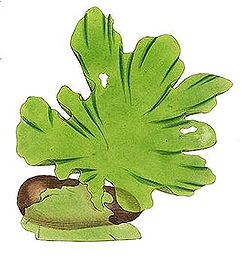| Ulvales | |
|---|---|
 | |
| Ulva | |
| Scientific classification | |
| Kingdom: | Plantae |
| Division: | Chlorophyta |
| Class: | Ulvophyceae |
| Order: | Ulvales Blackman & Tansley |
| Families [1] | |
Ulvales is an order of green algae.
| Ulvales | |
|---|---|
 | |
| Ulva | |
| Scientific classification | |
| Kingdom: | Plantae |
| Division: | Chlorophyta |
| Class: | Ulvophyceae |
| Order: | Ulvales Blackman & Tansley |
| Families [1] | |
Ulvales is an order of green algae.